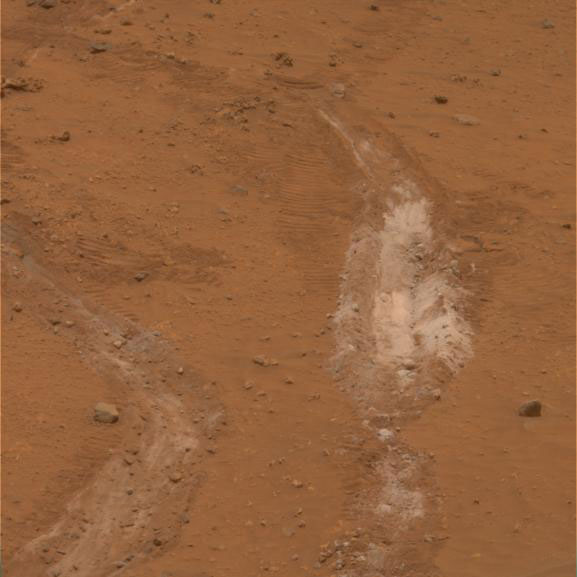Hydrothermal Vents on Mars Could Have Supported Life

Scientistshave found signs that water may once have gurgled up through the Martian soilin hydrothermal vents similar to those in Yellowstone National Park.
The site ofthese proposed vents could possibly contain preserved traces of ancient Martianlife, scientists say. That assumes, of course, that life might once haveexisted on Mars. No firm evidence for that idea has ever been found, however.
The ventsevidence comes from NASA's Mars ExplorationRover Spirit. The robotic explorer found deposits of pure silica, a form ofthe element silicon that occurs when hot water reacts with rocks (quartz is apure silica), in Mars' Gusev Crater in 2007. The discovery was announcedbriefly at the time, but scientists have now had time to fully analyze thedeposits. The results are detailed in the May 23 issue of the journal Science.
Silicasurprise
The silicawas found when Spirit was exploring the Columbia Hills, which rise 300 feet(100 meters) from the middle of the flat lava plain that fills Gusev Crater.Scientists were uncertain about just what had formed these hills.
WhileSpirit was parked near an area known as the Tyrone site, mission scientistsused the rover's Miniature Thermal Emission Spectrometer (Mini-TES) to look atsome nearby "knobby outcrops," said study team member Steven Ruff of Arizona State University.
"Itwasn't clear what we were seeing in the knobby outcrops because they werecontaminated with dust and wind-blown soil. But I thought they might besilica-rich," Ruff said.
Get the Space.com Newsletter
Breaking space news, the latest updates on rocket launches, skywatching events and more!
Surveys ofother crops showed the same hintsof silica, but were likewise contaminated. That's when the rover's jammedright front wheel came to the rescue. As the rover was driving in reverse, itscrippled wheel dug a trench behind it.
"Weaimed the Mini-TES at the trench and it showed a clear silica spectrum,"Ruff said. They also analyzed the trench's white soil with the rover's AlphaParticle X-Ray Spectrometer which showed that the soil was more than 90 percentsilica. "That a record high for silica on Mars," Ruff said.
Hothabitat for life?
Making suchpure silica requires a lot of hot water, Ruff said. "On Earth, the onlyway to have this kind of silica enrichment is by hot water reacting with rocks,"he said, making the connection to hydrothermal vents.
Thisrelationship also links the silica to Home Plate, a football field-sizedvolcanic feature in the Columbia Hills. "Home Plate came from an explosivevolcanic event with water or ice being involved," Ruff explained.
The teameventually found silica deposits in many other places nearby. Becausehydrothermal vents on Earth harbor life, scientists suspect that they may oncehave done so on Mars. And the trace could beleft in the silica deposits.
"OnEarth, hydrothermal deposits teem with life and the associated silica depositstypically contain fossil remains of microbes," said study team member JackFarmer, also of ASU.
"Butwe don?t know if that's the case here," he added, "because the roversdon't carry instruments that can detect microscopic life."
The sitestands in contrast to the one that NASA hopes will be explored by its PhoenixMars Lander starting next week, because while Phoenix will be looking atthe potential habitability of Mars' north polar region today and in the morerecent geologic past, the silica deposits in Gusev Crater represent a"possible habitable environment of Mars' ancient past," Ruff told SPACE.com.
- Video: Looking for Life in All the Right Places
- Mars Rover Special Report: Spirit
- Images: Spirit Photo Journal
Join our Space Forums to keep talking space on the latest missions, night sky and more! And if you have a news tip, correction or comment, let us know at: community@space.com.

Andrea Thompson is an associate editor at Scientific American, where she covers sustainability, energy and the environment. Prior to that, she was a senior writer covering climate science at Climate Central and a reporter and editor at Live Science, where she primarily covered Earth science and the environment. She holds a graduate degree in science health and environmental reporting from New York University, as well as a bachelor of science and and masters of science in atmospheric chemistry from the Georgia Institute of Technology.









